|
Tricia Hayton, Registered Physiotherapist  The long weekend is coming and for some of us that means field lacrosse provincials, but for many more it is the weekend of planting, gardening, and preparing our backyards for the warm summer weekends to come. And although the thought of warm days spent outside tending to our plants is relaxing and refreshing after a long winter, we need to remember that gardening is physical activity and there are some hints that can make it less stressful on the body. Here is what I recommend.
So, get out and enjoy the nice weather that is promised in the days to come. But make sure to follow these top five hints to prevent injury and pain.
0 Comments
Tricia Hayton, Registered Physiotherapist & Clinical Director There have been big changes happening at Physio Sport Med. Our regular clients will notice that there have been many new faces in the clinic over the last few weeks. We welcome Mark, Registered Physiotherapist, and Ashley, Registered Massage Therapist, to our team to get you back to the lifestyle you love. To learn more about them, please see our bio page. With the addition of these practitioners, we are very happy to offer extended hours and more convenient times, while maintaining the high-quality standards that our clients have learned to expect. You can see our practitioner hours here. We also welcome Weronika and Stephanie who will be taking care of the front office matters once Danielle leaves for maternity leave in June. We would like to thank everyone for their patience as we get our new front office staff ready to take over the helm. Weronika will be taking over as office manager and will be ready to answer any billing and insurance questions that you may have. Stephanie will be helping with early mornings and evenings, which means better care for you without interruptions.
The other major change that our patients may have noticed is that I am missing…at least a lot more often than I used to be. I have reduced my hours to part time at the clinic as I have accepted a position to work with Cycling Canada and the Canadian Sport Institute with the National Sprint and Endurance Track Team. It is a chance of a lifetime and I am happy to use my skills and expertise to help these elite athletes achieve their goal of competing in Tokyo 2020 and maybe even stand on the podium for Canada. Although I was armed with some previous cycling experience – both road and track, the learning curve is steep, and I am enjoying every minute of it. I will be splitting my time equally between the Velodrome and Physio Sport Med. This will leave me with plenty of time to “captain” the ship, make sure that our standards are met, and continue to treat you. We’re excited to be growing our team and we can’t thank you enough for your ongoing support! Tricia Hayton, Registered Physiotherapist It is that time of year again. Time to take your closed shoes and boots and stick them in a closet. Ladies, it is time to take your socks and push them to the back of the drawer. Time to pamper yourselves with pedicures. As the weather gets warmer, the structure and form of our footwear will often change from supportive closed shoes and running shoes to sandals and slip-ons. With this change, healthcare professionals often see an increase in plantar fasciitis.
First, what is plantar fasciitis? The plantar fascia is a long, triangular layer of connective tissue that runs from the mid point in your heel to the base of your toes. Its job is to support your arch and help create power when you push off in walking or running. This tissue will often start to fray at the insertion point creating micro tears. This damage to the tissue is called plantar fasciitis. Symptoms often include arch pain with walking and tired, aching feet. There is also a sharp pain with the first step in the morning and for some, the first few steps after sitting for a long time. Treatment for this disorder can be frustrating and long. Orthotics or taping can be helpful for some. Most find that stretching their calf muscle before standing in the morning can relieve the sharpest pain, but not all of the pain. Traditional physiotherapy treatment of Ultrasound, massage, mobilization, and strengthening of the intrinsic (small muscle) of the foot can also reduce symptoms. However, Shockwave therapy is often the solution for many. Research shows that 94% of people that did not respond to previous treatment have a significant reduction in pain and an increase in function with 2-3 treatments of Shockwave. Shockwave is a pulsed sound wave that creates blood flow and regeneration of the plantar fascia tissue. Shockwave is applied through the skin via a hand-held device. And although it can be tender during treatment, most clients state that this is temporary and worth it. If you would like to know more about Shockwave, please contact any one of the associates at the clinic and we will tell you if it is right for you. Melissa Gaudreau, STOTT Pilates Instructor and founder of Pilates Vitality and Wellness As we age, our physical strength, bone density, and cognitive abilities decline. This in turn deteriorates our sense of balance and we take longer to recover from falls. With age and inactivity, the unconscious processes in your brain that are responsible for balance may not integrate as well or as quickly as they used to, resulting in a fall. To reduce the risk of falling, you can slow the process of deteriorating balance with Pilates exercise. Pilates focuses primarily on strengthening deep internal muscles of the abdomen, lower back, and hips, often referred to as the “powerhouse”. The largest benefit of Pilates is developing a strong core; the most important thing aiding in mobility and balance. Whether you are practicing Pilates on the mat or with equipment, your balance will be challenged on a scale from moderate to high based on your current ability to perform the exercise. A recent systematic review published in the British Journal of Sports Medicine aimed to investigate this very topic – What is the effect of Pilates on balance and falls in older adults? In this review, six studies were included that investigated a Pilates exercise intervention and also reported a measure of balance or falls. The Pilates interventions in the included studies compared a group that participated in Pilates for at least 2 hours per week over a period of 5-24 weeks to a control group that did not participate in Pilates. Based on the combined results from these studies, this review indicates that there is a significant improvement in balance among older adults who participate in Pilates. Only one of the six studies reported data on falls, but they also found a significant reduction in the number of falls among older adults who participated in the Pilates intervention. Although these results look promising, there were some study limitations. More higher quality research is needed in this area to provide stronger evidence on the effect of Pilates on balance and falls. To bring a real-life perspective to this research, I would like to share a common statement that I often hear from my elderly clients: “I just realized how good my balance is in comparison to the majority of my friends who cannot put their shoes on while standing.” This is just one of the many real life examples that show the benefits of Pilates – there are many more ways to improve the quality of your daily life through Pilates exercise. Pilates doesn't just improve balance in the elderly, it can increase balance in everyone, including younger individuals and athletes, and therefore, Pilates is recommended for everyone. Pilates truly is a life-changing movement. Stephanie MacNeill, RD If you're a child of the 90's, or raised children in the 90's, a purple dinosaur probably taught you that 'sharing is caring'. Although he may have been talking about sharing toys, there's something to be said about sharing meals too. To say that Canadians are busy people may be an understatement. When it feels like time is scarce, it can be difficult to make time to connect with family or friends to share a meal. Roughly one-quarter to one-third of families never or seldom eat together as a family. But it's important to share meals. It allows people to connect, share traditions, learn, communicate, listen, and it also helps us eat a more balanced diet. Sharing meals is an enriching experience for people of all ages-from children to older adults. The biggest barriers to eating together are busy schedules like work and evening activities. Balancing a busy schedule certainly takes a little bit of creativity, but everyone benefits when you make the effort to eat in the company of others!
Now, whether out to dinner with friends or at home around the table with family, we have all experienced phubbing. What is that you might ask? Phone snubbing, it's when someone ignores their real-life companions in favour of their phones or other devices. A 2015 study found that 46.3% of participants experienced this regularly from their loved ones. As addicting as phones may be, it is possible to have a fun dinner with friends and family without anyone using their devices...I promise! If you've exhausted all your usual topics of conversation and caught up on each other's days, a well-worded question can go a long way. Try and ask questions that require more than a simple 'yes' or 'no' answer.
Sharing a family meal doesn't have to only mean dinner! If you have hectic evenings, share breakfast meals instead, or have brunch together on the weekends. Most studies done on the benefits of family meals suggest starting with at least four meals together each week. They all count! Melissa Gaudreau, STOTT Pilates Instructor TIP The most basic aspect of the Pilates method is sitting tall, looking forward and avoiding slouching. Good Posture: Pilates will teach you to gain and maintain good posture. The exercises require that your body is always in alignment. This is especially beneficial if you suffer from lower back pain. Muscle Tone: The exercises involve the use of muscles that you may not use on a daily basis. This is especially good for those who are normally quite sedentary in their daily life as well as older people because muscle tone is usually lost with inactivity and age. Stronger Core: One of the benefits of Pilates is that it will result in a flatter tummy because it focuses on strengthening your core, which includes your abdominal muscles. Less Back Pain: Back pain mostly results from faulty posture and a sedentary lifestyle. Pilates addresses the muscle imbalances that most typically contribute to back pain, namely weak abdominals and glute muscles. Pilates also stretches out the tight and overworked back muscles. Proper alignment is the main factor that helps to alleviate back pain. If you do Pilates, you’ll understand how to use your body in ways that protect your back from injury. Flexibility: Pilates exercises stretch the muscles and the joints while they strengthen the body. As we age, we tend to lose the flexibility we had when we were young. Pilates helps restore flexibility. This is especially important in order to avoid injuries from falls. REMEMBER Everyone has physical limitations that depend on age, genetics, and lifestyle. Pilates is not a panacea, but if you do a regular Pilates exercise program, your body can reach its potential in the areas of flexibility and strength. More Awareness: If nothing else, doing Pilates should give you a new awareness of your body. You may never have thought about pulling in your tummy, sitting up tall, or keeping your shoulder blades down away from your ears. And you may never have thought a lot about how you breathe. The things you discover in Pilates will start to filter into your daily life, and you may find that you correct your own posture and habits naturally. TIP: Walk the Right Way When you stride down the street, think of walking with a long stride, initiating the movement from the hips and glutes, not just the knees. This way of walking increases the length of your stride while stretching out the front of your hips (hip flexors). Walking with long strides helps reverse the tightness in the hips and back that comes from long bouts of sitting. Better Balance: Through the mind-body connection which is taught in Pilates, you will become much more aware of how your body moves and performs. Therefore, Pilates not only improves your physical balance through correct posture, but also restores your mind-body balance. Greater Strength: Any exercise regimen should increase your body’s overall strength. But Pilates strengthens the muscles in your body that you may actually notice on a day-to-day basis. Whatever activity you do, you’ll find that Pilates exercises improve strength in meaningful ways and can help with the overall health of your spine. Doing Pilates can prevent injuries, too! Reduces Stress: When doing the exercises, you'll be totally engrossed and won't be able to think about all those responsibilities that weigh you down on a day-to-day basis. You'll be more focused on your breathing and on the moves that you are making with your body. This is an excellent way to relieve stress. Introduce Pilates to your weekly routine, but be patient. No exercise program works miracles. Changes in your body will become apparent if you maintain a regular Pilates program. “Change happens through movement and movement heals." - Joseph Pilates “The mind, when housed within a healthy body, possesses a glorious sense of power." - Joseph Pilates Pilates isn't just for fitness fanatics. It's a complete fitness method to build strength in your core muscles for better posture, balance and flexibility, and when performed regularly, it positively changes bodies. It combines awareness of the spine, proper breathing and strength, and flexible training. Research has found that Pilates can be an effective treatment for injuries and illnesses such as:
It is also excellent for athletes, dancers, and other sports professionals who have had some kind of injury and need rehabilitation to get back into top form. Because Pilates is a low-impact exercise, it can be tailored to work on certain areas of your body as long as you have a trained and qualified instructor – like me. :) “Every moment of our life can be the beginning of great things." - Joseph Pilates
Stephanie MacNeill, RD Injuries are an unfortunate and sometimes unavoidable aspect of participation in sport and exercise. Treatment options for injury often include rest, ice, massage, manual therapy, heat, electrical stimulation, and acupuncture. An often overlooked intervention is nutrition. To understand the potential of food to help in the healing process, we first need to understand a little bit about the stages of injury. Most exercise-related injuries go through three main stages in the recovery process. In the first stage, which lasts anywhere from 1-7 days, pain, swelling, redness and heat draws chemicals to the injured area to start the healing process and increase blood flow to the area. In the second stage, which can start as early as day 4 and last about 6 weeks, inflammation begins to settle down and the body starts to repair the damaged tissue by laying down collagen. These new collagen fibres are put down in the form of scar tissue, which is weaker and less flexible than normal tissues. In the third stage which starts around 2-3 weeks post injury, healing continues to progress and the collagen fibres improve in quality, organization and strength. Nutrition plays an important role in each of these stages. Stage 1
Although inflammation is a critical part of triggering the repair process, too much may cause more damage. During this phase, try to include more anti-inflammatory fats in your diet. These include:
At the same time, try to limit pro-inflammatory foods like:
Stage 2 and 3 In these stages, metabolism may increase anywhere from 15-50% to support new tissue growth. So you'll need more calories than when you are sedentary, but fewer than when you are training and exercising regularly. Over the course of the day:
Unlock Foods Potential to Heal Next time you find yourself sidelined with an injury, consider adding a registered dietitian to your treatment team to help ensure that you are getting the right nutrients to support your body in healing. Melissa Gaudreau, STOTT Pilates Instructor  Pilates is a system of exercises using various props and special equipment, designed to improve physical strength, flexibility, posture, and enhance mental awareness and overall well-being. Pilates emphasizes your body’s core — the abdomen, obliques, lower back, inner and outer thighs and glutes. For this reason, Pilates develops much of what exercisers need — strength, flexibility, muscular endurance, coordination, balance, and good posture — with a much lower chance of injury than with other forms of exercise. This discipline emphasizes correct form. Pilates moves require you to engage virtually your whole body. At times, you may strengthen one muscle while stretching another. The moves take lots of concentration; you can’t simply go through the motions like you can on gym equipment. And then, for every move you think you’ve mastered, Pilates has another version that’s a little different and a little harder. Pilates teaches you to think about how you use your muscles during your workout so you use them better in daily life. For instance, because much of the focus is on good posture and body mechanics, you stand and sit taller, and walk more gracefully. Pilates also focuses on the mind-body connection. While doing the various exercises, your mind needs to be constantly aware of your breathing and the way your body moves. Although there are similarities between yoga and Pilates, yoga is a more relaxing form of exercise that tends to focus more on spiritual well-being, whereas Pilates is more of a physical program which focuses on toning and strengthening. Pilates is named after its inventor, a German physical fitness specialist Joseph Pilates, a former carpenter and gymnast who invented the exercise for injured dancers. Many of the moves were inspired by the principles from the ancient Greeks and how they trained their Olympians. He had a great library and was always studying - he was a genius of the body. “Pilates is designed to give you suppleness, natural grace, and skill that will be unmistakably reflected in the way you walk, in the way you play, and in the way you work." - Joseph Pilate
Stephanie MacNeill Lifestyle factors, including good nutrition and adequate exercise, have the potential to influence our health. A nutritious diet can help prevent illness and can help lower the risk of developing chronic diseases like Type 2 diabetes, heart disease, stroke, dementia and certain types of cancer. In fact, almost 80 per cent of premature stroke and heart disease can be prevented through healthy lifestyle behaviours (such as eating healthy, being active, and living smoke free). What's Best? There are many diets or eating patterns, some healthier than others. So you may be wondering, which eating pattern is best? The reality is that there is no one absolutely, positively best diet for everyone. Everyone differs in terms of their:
So the best eating pattern is one that you enjoy and can stick to even on your worst days-not just your best. Dietitians can help you follow a healthy eating pattern suited to your individual needs and health goals. Building a Balanced Diet
A basic healthy diet for disease prevention includes the following foods:
Notice anything missing from these basic ingredients? They don't contain a lot of highly processed foods with a lot of added sugar, salt and trans fat. Work With a Dietitian Consider working with a dietitian if you have health goals or concerns about your risk of chronic disease. We will work with you to embrace food, understand it, and to enjoy it while considering your overall objectives, needs, and challenges. As dietitians, we look beyond fads and gimmicks to deliver reliable, life-changing advice. Stephanie MacNeill Role: Registered Dietitian Stephanie, the newest member of our team, is our registered dietitian. See her full bio here. Qualifications: BSc. Kinesiology BSc. Nutrition and Dietetics MHSc (c) Nutrition Communication What is your favourite part of your job? The favourite part of my job is helping others be the healthiest version of themselves. What is your favourite sport to watch? Hockey!! Although summer is my favourite season, the morning sports highlights just aren't the same without hockey. Have you ever needed sports medicine or therapy? Yes! As a competitive runner and former varsity athlete I've needed my share of sports medicine therapy. Most recently I tore one of my hip flexors at the end of a running workout (grass was slippery, footing wasn't great) ...not fun! If you a crayon in a Crayola box, what colour would you be and why?
Purple-it combines the stability of the colour blue and the energy of the colour red. It also happens to be my favourite colour. What cartoon character best represents you? Belle-she was my favourite Disney cartoon character growing up, and I admire her bravery, independence and intelligence. Stephanie MacNeill, RD In this, the second week of Nutrition Month, I'm going to discuss foods potential to discover: Foster healthy eating habits in children by teaching them to shop and cook. In a culture that is increasingly relying on heavily processed, packaged and take-out foods, many children are growing up lacking basic food skills, including how to shop, cook and build a balanced meal. Teaching children from a young age, how to shop for and prepare healthy meals can set them up for a lifetime of healthy eating. 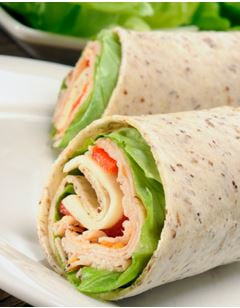 Shopping for and preparing healthy meals is also a great way to help your child learn new skills and build on lessons they learn in school.
Cooking is also a great way to spend some extra time with your children or to reconnect after a long day apart at work and school. You can also use it as an opportunity to keep your cultural roots alive by teaching your children some of your favourite traditional family recipes. Getting children involved in meal preparation is fun and rewarding! For an easy school lunch that you and your child can make together, give this Rockin' Ranch Roll Up a try! Makes: 1 serving Preparation Time: 5 minutes Ingredients 1 10-inch whole wheat flour tortilla 2 tsp light ranch style dressing (or honey mustard) 2 slices deli turkey, chicken or ham 2 Tbsp shredded cheddar cheese 1 large leaf of iceberg, Romaine or Bibb lettuce 2 slices of tomato Instructions 1. Spread ranch dressing on tortilla. 2. Top one half of the tortilla with meat, cheese, lettuce and tomato. 3. Starting with the meat/cheese edge of the tortilla, roll up and enjoy! Notes: serve with a side of baby carrots and cucumber slices Visit Cookspiration or download the app for more great recipe ideas! Stephanie MacNeill, RD  I'm so excited to be part of this year's Dietitians of Canada Nutrition Month Campaign! We are celebrating Nutrition Month 2018 by helping Canadians unlock the potential of food to fuel, discover, prevent, heal and bring us together. Dietitians all have one thing in common: we love food! Shocking, right? Whether we are counseling a patient recovering from a heart attack, teaching a cooking class or taking students through a tour of a grocery store, we are all passionate about the potential of food and its connection to health. You will learn so much this month about the amazing potential of food! To kick off Nutrition Month, I'm going to discuss foods potential to fuel. Almost half of all Canadians say they find it challenging to eat a balanced diet because they are so busy. They often skip meals and close to 30% of Canadians say they eat of lot of snacks to stay fueled throughout a busy day. Snacks sometimes get a bad rap. To some, snacking means eating when you're not hungry and to others it means loading up on unhealthier foods like chips, cookies and candy. Nutritious snacks, in the right portion sizes can be part of a healthy eating plan and is a great way to get all the nutrients the body needs each day. Five Smart Snacking Tips Fueling your body with healthy snacks between meals can help maintain stable blood sugar levels and lead to more consistent energy throughout the day. Snacks can also curb your appetite and prevent overeating at meals. Make snacking a piece of cake (okay, maybe that was the wrong analogy here) with these five tips:
Healthy Snack Ideas Next time you're looking to fuel up between meals, skip the vending machine or coffee shop and give one of these tasty snack suggestions a try:
Visit Cookspiration or download the app for more un'beet'able snack ideas! Dr. Eric St-Onge, DC, BSc(Hon), CSCS, ICCSP, FRCCSS (C) This is often a reaction I get when I tell people what I do.
There are many misconceptions when it comes to chiropractors. If you ask a group of people what chiropractors do for a living, odds are cracking backs are at the top of the list. In this post, I hope to shed some light on some of the misconceptions that come with what we do for a living. 1. "Chiropractors only work on neck and low back pain" We work on essentially anywhere in the body as it pertains to musculoskeletal (MSK) conditions and their associated neurological system. This includes most things from head to toe. 2. "Once you start, you'll have to see a chiropractor forever" Not true! If you are injured, your chiropractor will put together a plan to get you back to where you want to be. Most importantly, the plan will have an expiry date. Meaning, if you're not better, the chiropractor will either update the treatment plan, or refer you to another health care professional. Also, similar to how you see your family doctor for a yearly physical to make sure things are going well, or your dentist twice a year for a cleaning to keep cavities from creeping up, seeing a chiropractor a couple of times a year, even if you're not injured, can help keep you functioning well and out of pain! 3. "The only thing that chiropractors know how to do is crack backs" A "crack" (the correct term is actually manipulation) is just one of the many tools we possess! You don't see a carpenter only use a hammer 100% of the time, right? After a thorough history and physical examination, a diagnosis is made along with a plan of management and the appropriate tools are used. Here are a few examples of some of the tools we use:
Thus, because our chiropractor at Physio Sport Med has many tools in the tool box, expect a typical treatment to last approximately 30 minutes. We take the necessary amount of time to do a great job and not "rush" things. I hope this article helps to shed some light on what chiropractors really do. If you're interested in having a chiropractor help you, please call the office at 905-257-3456 to book! Paul Mazur, Registered Physiotherapist Role: Registered Physiotherapist
Paul is one of our two amazing physiotherapists here at Physio Sport Med. His full bio can be found here: http://physiosportmed.ca/practitioners.html Education, certification, and courses: BA (honours) Masters in Physiotherapy (MPT) Diploma of Advanced Manual and Manipulative Physiotherapy Fellow of The Canadian Academy of Manipulative Physiotherapy Acupuncture Foundation of Canada 1. What is your favourite part of your job? I love the clinic environment. I'm a bit of a fixer, I see myself as a human mechanic. I enjoy being able to figure out what is wrong and working on a plan with the patient as well as other practitioners as needed to fix the problem and get the person back to doing what they love. 2. What is your favourite part of the body to treat? can't say I have a favorite, although I really enjoy a fixated joint in the spine and ACL rehab. However, every injury has a story or a process. I enjoy learning the whole story of how something happened and why it is the way it is. 3. What is your favourite sport to watch? It’s too hard to say. Any game of the big 4 during the playoffs, usually hockey in the winter, baseball in the summer, football on Sundays, and mixed martial arts when I'm interested in a specific fighter. I love that baseball provides the comfort of always being there since there are 162 regular season games for any given team. 4. What is your favourite sport to do/play? I love to snowboard and ski in the winter. I started skiing when I was 6, but switched to snowboarding after a torn meniscus in my early 30's. During the spring/summer/fall I love to golf, cycle, and rollerblade. I also lift weights and box pretty regularly to stay in shape. 5. Have you ever needed sports medicine or therapy? Yes. I’ve had a right labrum tear in the shoulder, right hip impingement, and a right lateral meniscus tear in the knee. All injuries actually happened as I was in physio school, imagine that. Took some time but I rehabbed them all. Mental note: do not go trekking with a torn meniscus, really bad idea. 6. If you could sing one song on American Idol, what would it be? I don't sing. Period. 7. If you were a crayon in a Crayola box, what colour would you be and why? Navy Blue. It reminds me of the ocean water, soothing. 8. Would you rather fight 1 horse sized duck, or 100 duck sized horses? The odds are not in my favor in either scenario. A horse sized duck would be awesome to see, but you must understand that this is a mutant. Although the duck sized horses seem like a better option, I would imagine that they would attack in a pack. In the end, I would take the giant duck. I have better odds one on one - but I'm not fighting in water. 9. What cartoon character best represents you. Muttley - a little mischievous, but overall harmless with an infectious laugh. Kristy Wiltshire, RMT, SMT(C), BA Kin Role: Registered Massage Therapist Although Kristy is passionate about sport massage, her talents go much deeper than that. She can get you back to your active lifestyle. Her full bio can be found here: http://physiosportmed.ca/practitioners.html Education, certification and courses:
I became an RMT because I wanted to help people both in everyday activities and in a sport environment. My passion is sports and working at events on the sideline. The best part of this is being part of the athletes support system and seeing the athletes achieve a personal best or medal. Pre-event and post-event massage is exciting and fast paced which is different than clinic work 2. What is your favourite part of the body to treat? As horrible as it may sound, I like treating the most tender body parts such as the IT band, hip, and plantar fascitis. But hear me out. These are the body parts that provide the most release and really help relieve my patients’ pain and discomfort, getting them back to their activities of daily living or sports.  3. What is your favourite sport to do/play? In 2003, I moved to BC and hit the ski slopes. Nothing can compare to the scenery on BC Mountains, but life has changed and now I get to experience this sport all over again from the beginning through my husband and my 2-year-old son, Max. It’s a great way to spend quality family time as they learn to ski. Running in recent years has become a way to deal with stress and bond with the girls. I would have never thought a High school field hockey goalie would eventually run a half Marathon while pregnant. 4. If you could sing one song on American Idol, what would it be? As my sister would say, get your ear plugs. I cannot sing. 5. If you were a crayon in a Crayola box, what colour would you be and why? Orange because it is a bright and fun colour that most people smile at when they see it. 6. Would you rather fight 1 horse sized duck, or 100 duck sized horses?
Neither by myself. I would call in a team of people to help me. You have to know when you need to ask for help!!! 7. What cartoon character best represents you? Mulan. Why you ask? Because she is an independent, bold and courageous woman who will do anything for her family and will risk her own life for them. Her determination and courage in the end is what helps her achieve her goal. I have always been able to set a goal, see it through and determine a plan to make the steps towards achieving that dream or goal. Eric St-Onge, BSc(Hon), CSCS, DC, ICCSP, FRCCSS(C) Role: Sports Specialist Chiropractor Dr. St-Onge has a special interest working with active individuals. Beyond manipulations (cracking), he uses an integrated approach including massage techniques, exercise and movement analysis to maximize rehabilitation. His full bio can be found here. Education, certification and courses: DC - Doctor of Chiropractic ICCSP - Internationally Certified Chiropractic Sports Practitioner FRCCSS(C) - Fellow of the Royal College of Chiropractic Sports Sciences (Canada) Contemporary Medical Acupuncture Provider CSCS - Certified Strength and Conditioning Specialist® SFMA - Selective Functional Movement Assessments FRCms – Functional Range Conditioning FR – Functional Range Release (Lower Limb) 1. What is your favourite part of your job? Being able to empower my patients to take charge of their health and play an active role in their rehabilitation /treatment. 2. What is your favourite part of the body to treat? As the wise Chubbs used to say, “It’s all in the hips” 3. What is your favourite sport to do/play? Though I have many years of competing in Kettlebell Sport under my belt, I’ve taken a big liking to climbing (mainly bouldering) in recent years and I am completely hooked! 4. Have you ever needed sports medicine or therapy?
You don't play sports to a high level without ever needing therapy! I sustained a minor back injury from Kettlebell Sport while in undergrad and visited my chiropractor that I hadn't seen in a few years - she fixed me up, and that's how I decided to enroll in chiropractic school. 5. If you could sing one song on American Idol, what would it be? ”Turn the Page” from Bob Seger, BUT it must be the Metallica version. Obviously. 6. If you were a crayon in a Crayola box, what colour would you be and why? Green, more specifically color code 8cc145. Yes, I’m a precise person. 7. What cartoon character best represents you? Popeye the sailor man, because of his excellent grip strength, made spinach cool for kids, loves his wife, and has questionable vocabulary skills. Stephanie MacNeill, RD, MHSc  During the off-season, the average golfer can gain anywhere from 5-10 pounds. This will not only increase your pant size, it may also raise your golf score too! One often overlooked way to cut strokes from your game and feel better all round is eating and drinking right. Here are a few simple tips to keep in mind when trying to manage your weight in the off-season: 1. Be mindful of portions There's no denying that portion sizes are creeping up. Just compare the size of a standard coffee shop muffin today to those from 20 years ago. They are almost double the calories! If not mindful of this, it could lead to a creeping waist line. An easy way to know portion sizes is to use the "plate method":
Ever heard of the Delbeouf Illusion? Well it might just help you eat less. The Delboeuf Illusion is an optical illusion of size perception. If you put a small piece of food on a large plate, your brain will tell you that you are eating a small portion. Put this same small piece of food on a smaller plate and your brain will tell you that you're eating a larger portion. From a psychological standpoint, it feels less like you are depriving yourself. So don't make that large plate mistake!  3. Don't drink your calories Calories that sneak in through beverages are often forgotten. This is particularly true when talking about alcoholic and sugary drinks like soda and fruit juices. These forgotten calories can really add up throughout the day, sabotaging even the best weight management efforts. Water is a great low calorie way to quench your thirst. Not a fan? Try sprucing up your water by infusing it with some fruit or spices. Now that's refreshing! 4. Eat your veggies Who hasn't heard this one growing up. While your parents may not have meant this to help with weight management, they may have been on to something. Vegetables (and fruits) can add bulk to a meal but do not provide many calories. They are what we call nutrient dense foods. Plus, their vitamin, mineral and antioxidant content can help protect us from disease and help keep us looking and feeling our best. Thanks mom and dad! 5. Eat more slowly Many of us live life in the fast lane, so it's understandable that we might try to save time by rushing our meals. However, eating quickly really does us no favour. It takes about 20 minutes for our brains to register that we're full. When we eat too quickly, we can continue eating past the point where we're full, leading not only to weight gain, but also poor digestion and a lower satisfaction from eating. Eating slowly on the other hand, gives us time to realize that we're full and stop on time. Imagine that! So maybe the tortoise does beat the hare at meal times. Meeting with a Registered Dietitian is a great way to help you integrate these tips into your diet to help you optimize your health and performance. Tricia Hayton, Registered Physiotherapist  Physio Sport Med was honoured to be invited to the Oakville Golf Club to take part in their Wellness Lunch and Learn Series. Stephanie MacNeill, dietitian, and myself, Tricia Hayton, sport physiotherapist, discussed what can be done during the off season to benefit your game next year. I specifically talked about low back injuries and what can be done to prevent them. Did you know that up to 30% of golf injuries are low back injuries, and that professional golfers have more low back injuries that ANY OTHER PROFESSIONAL ATHLETE? On average, an amateur golfer misses four weeks for each injury. When we are talking about the short Canadian summer, that can be a large percentage of your season. So, what are the top five things you can do to avoid missing your weekly tee off time?
Give these suggestions a try, but if you would like a specific program to maximize your game, we are here to help. What did Stephanie have to say about diet…. Stayed tuned for more information to come! Dr. Christopher Woollam, MD, Dip Sport Med 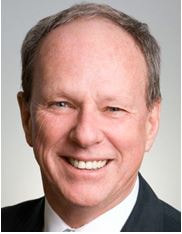 After over 20 years of practicing sport medicine, I have come to realize that there is much more to this job than simply looking at damaged body parts. I need to also look at each individual with compassion and understand their unique needs. Since all people are different, their needs and wants will all be very different as well. When I see the young athlete with a torn ACL (anterior cruciate ligament), it is different than seeing an older individual with arthritis in the knee. Both need attention but for different reasons. The young athlete may have a scholarship pending - consequently needing immediate high-level attention. The arthritic knee also needs attention, but instead to preserve quality (and quantity) of life. In conclusion, it is my job to assess and manage both the physical and personal needs of the individual. I teach this to my resident physicians, and encourage it with my staff. With our advanced patient management at PhysioSportMed, we aim to restore you back to your best – whatever that looks like for you. With that in mind, we remain life-long learners, providing only the best care, both clinically and personally. Dr. Kimberly Fernandes, BHSc, MD, CCFP  The start of the New Year is a common time for everyone to take a closer look at their health. Those of us that hit the gym have probably noticed that it is busier than ever! While being physically active is important, our diets also play a large role in our health. Anecdotally, I have often had patients and friends opt for sweeteners in their food and drinks (aspartame, sucralose, stevioside, etc.) as they are calorie neutral compared to sugar. We like to think that this will help us lose weight (which comes with a host of health benefits!), but are non-nutritive sweeteners better for your health? Will they actually help you lose weight? A recent study was published in the Canadian Medical Association Journal in December 2017 on this very question. It combined the results of multiple studies that looked at the effect of non-nutritive sweeteners on body mass index, weight, obesity and other cardio metabolic outcomes such as the incidence of hypertension (high blood pressure) and diabetes (poorly controlled blood sugar). Interestingly, consumption of non-nutritive sweeteners was associated with weight gain, increase in waist circumference, and higher rates of obesity, hypertension, and diabetes. It should be noted however, that the study did not take into account family history, individual behaviours with respect to health and exercise, total daily calorie consumption, and other variables that would influence the outcome. Basically, people who choose non-nutritive sweeteners may have other health conditions or behaviours that predispose them to these negative outcomes. Further studies are needed to investigate these variables in relation to non-nutritive sweeteners and other health behaviours in the population. At the end of the day, it seems that we cannot have our cake and eat it too. Although the above study shows that non-nutritive sweeteners are not helpful when it comes to weight loss and improved cardio metabolic health, we need to remember that there is more to our diet then just relative sugar consumption and that exercise is also an important factor. While non-nutritive sweeteners have been approved by Health Canada and are safe for consumption, it is important to remember that although the cake sweetened with stevia may not contain calories from glucose (sugar), it will contain calories from all the other ingredients. Opt for a smaller piece or replace it entirely with a much healthier fruit. A healthy approach to weight loss is a plan that combines proper diet and regular exercise. Please speak with a healthcare professional if you have any questions or concerns about healthy weight loss. Tricia Hayton, Registered Physiotherapist  There are members of the medical community that have added competencies that recognize additional expertise and skill sets which allow them to have a focused practice. In a recent article from The Journal of the College of Family Physicians of Canada, Marni Wesner wrote, “the leaders in Sports and Exercise Medicine in Canada have been identified and awarded certificates of added competency.” Does this mean that Sports and Exercise Medicine Physicians only see elite athletes? No Again, to quote Wesner, “Sport and exercise medicine (SEM) physicians have specialized training and skills directed towards assessment, diagnosis and treatment of acute, sub-acute and chronic injury and illness as they pertain to participation in an active, healthy lifestyle. More than expert musculoskeletal assessment, the knowledge and expertise of the SEM physician extends to fracture management, joint reductions, joint and soft tissue injections and interpretation of imaging studies, as well as rehabilitation of injury, nutrition, concussion/head injury, sport psychology and orthotics/braces. SEM physicians have a keen interest in sport, but also in the lifelong promotion of physical activity for wellness and the prevention and treatment of chronic diseases (i.e. diabetes, hypertension, obesity and arthritis)". What does this mean for those of us who are not elite athletes, but are just trying to stay active and enjoy sports with our friends to keep moving and stay healthy? Our doctors are here to make this easier for you. They are experts in assessing injuries to muscles and joints to give you a solid diagnosis as well as advice regarding how to minimize damage while also continuing to stay active. This expertise moves beyond strains and sprains, to advice regarding concussions, osteoarthritis, and chronic joint issues that are preventing you from being as active as you can be. We have seen a wide variety of patients – from those who are preparing to travel internationally to represent Canada, to the executive that plays squash with friends on the weekend, to the older gentleman who is now struggling to walk through the grocery store due to foot pain. We often get phone calls asking, “Can I come see you even if I am not an athlete?” The answer is a resounding - YES! Give us a call and we can book you with one of our Sports Medicine Physicians. Tricia Hayton, Registered Physiotherapist  It is that time of year again. There is a lot of rushing to and from the mall, holiday concerts, and social gatherings. And although this time of year can be fun, it is often very difficult to stick to a healthy lifestyle. This includes diet, exercise, and relaxation. Here are some helpful hints to help.
My final piece of advice, don’t expect to be perfect. After all, the holidays only come around once a year. On this note, I’ll end with a useful quote. “Giving up on a whole day of healthy eating because you allowed yourself one treat, is like dropping a cell phone, then stomping on it just to make sure it is broken.” Tricia Hayton, Registered Physiotherapist  It is that time of year again. We are back in the rinks and the kids (and kids at heart) are playing hockey. Did you know that upper body injuries happen more frequently than lower body injuries during hockey? Let’s break down what happens.
As always, the best treatment for any of these injuries is prevention. For a quick reference sheet in preventing upper body injuries follow this link from ProStock Hockey (Upper Body Injuries) and check out their website for more information! In general, make sure you are strong, use good technique, and have all of the proper equipment that is certified and well fitted. Tricia Hayton, Registered Physiotherapist  When I look outside, I know what I will be doing this weekend. Beyond packing up the Halloween decorations, it’s time to clean up the backyard for winter. However, raking and trimming can be very stressful on your body. It is one the leading causes of low back and shoulder injuries at this time of year. Here are some helpful hints to keep you going and keep you healthy.
Hopefully these tips will help keep you strong and injury free this season. After all, it won’t be too long until we are shovelling snow… Kimberly R. Fernandes MD, CCFP  Introduction Hi, my name is Kimberly Fernandes and I am the new sports physician at Physio Sport Med. I want to take some time to introduce myself, as well as the role of sport medicine physicians, in helping you, whether you are a full-time athlete, a weekend warrior or are just looking to treat chronic musculoskeletal issues. Education I completed my Doctor of Medicine degree at McMaster University’s Niagara regional campus in 2015. I then moved back home to Mississauga to complete my Family Medicine Residency training at the University of Toronto’s Trillium Mississauga site. I acted as chief resident during my final year and did research on wellness among medical trainees. I have also attended the Ontario Medical Association’s Sport Med Conference in the last few years to keep up with current innovations in the field. Experience During my many years of medical training, I have always been interested in sports medicine. I have spent time in many sports clinics, and with many rehabilitation specialists including physiatrists, neurologists, physiotherapists, athletic therapists, and chiropractors. I have also provided medical coverage at sporting events including the Skate Canada World Junior Synchronized Skating Championships and the Little League Ontario Baseball Provincial Championships. How I Can Help You As a sports physician, I treat a variety of issues that range from sports-related injuries to chronic musculoskeletal conditions such as osteoarthritis. Whether you are looking to overcome an injury and get back into sport, or to find alternative solutions to long-standing issues, I, as a sports physician, am here to guide you. I am also trained to do joint and other soft tissue injections as indicated for treatment. If you have an issue you would like to discuss, call or drop by the clinic to inquire about an appointment. Visits to a sport medicine specialist are covered fully by OHIP, and while a referral note is always appreciated (as the referring doctor can provide necessary information about your current health status and imaging results), it is not required to book an appointment with me. I look forward to meeting you! |
Physio Sport Med
Serving all of Oakville in the Uptown / Dundas-Trafalgar Core. Archives
May 2025
Categories |
- Info
- Book Now
-
Team
-
How We Treat
- Sport Medicine Consultation
- Manual - Exercise Physio
- Sport Physiotherapy
- Tissue Injections
- Acupuncture
- Vestibular Physiotherapy
- Osteopathy
- Chiropractic Care
- Concussion Program
- Shockwave Therapy
- Female Pelvic Health
- Male Pelvic Health
- Registered Massage Therapy
- Nutrition Consultation
- On-Field Therapy Coverage
- Custom Orthotics
-
What We Treat
- Sports Injuries
- Low Back Pain
- Osteoarthritis
- Motor Vehicle Accident
- Sprains
- Muscle Strains
- Concussion
- Rotator Cuff
- Tendonitis
- Neck Pain and Headaches
- Hip Pain
- Shoulder Pain
- Elbow, Wrist and Hand Pain
- Foot and Ankle Pain
- Post Surgical Rehabilitation
- Gait and Balance Disorders
- Knee Injuries
- Pelvic Floor Conditions
- Blog



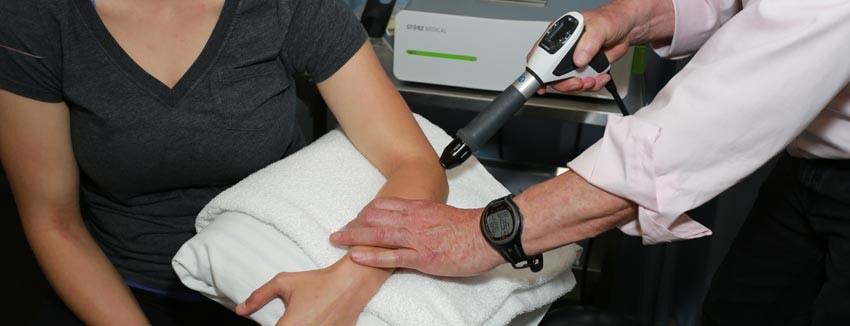
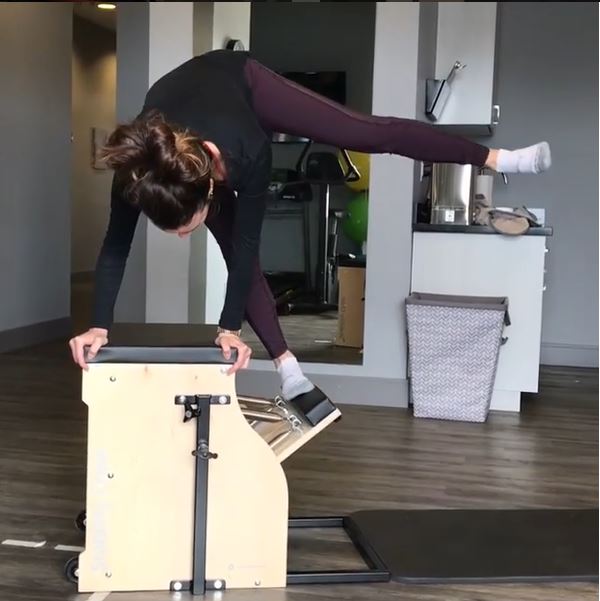
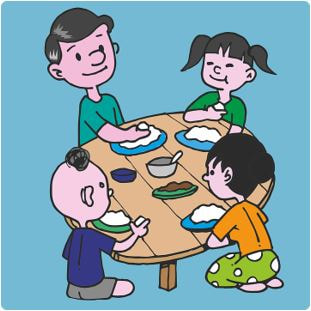
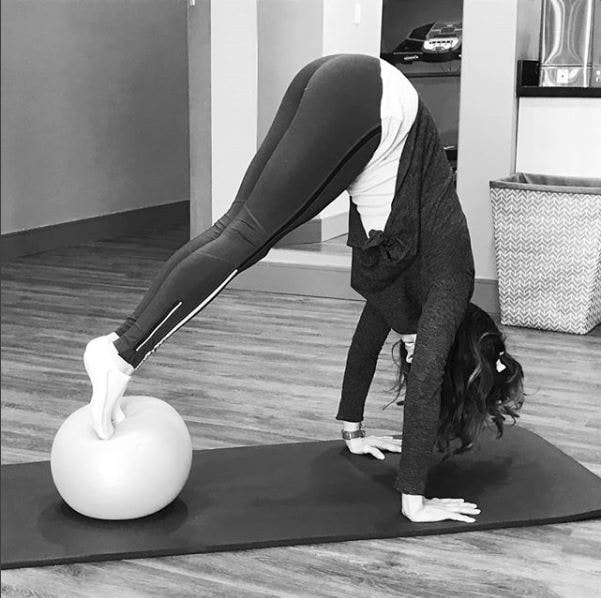





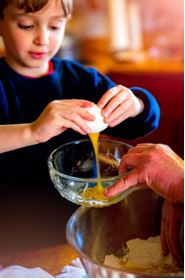
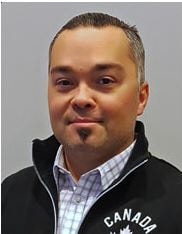







 RSS Feed
RSS Feed